How to make a stucco molding with your own hands?
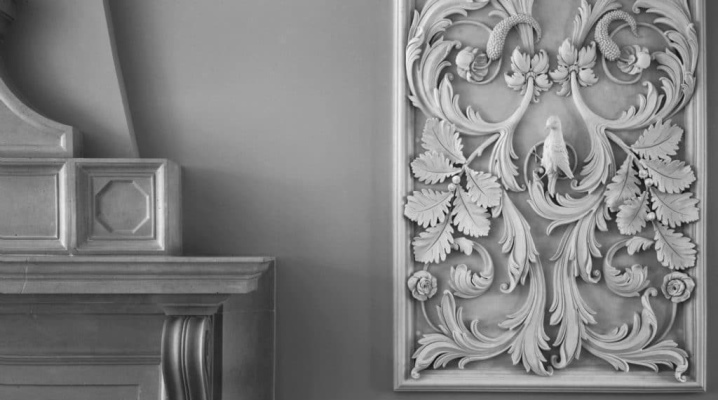
Stucco molding is an element that does not carry a special functional load, but at the same time has a strong aesthetic effect and can radically change the overall impression of the interior. To perform stucco on the walls and ceiling, you can turn to the services of professionals, but, as a rule, this is quite expensive. However, if you have imagination and some artistic ability, you can always do it yourself.
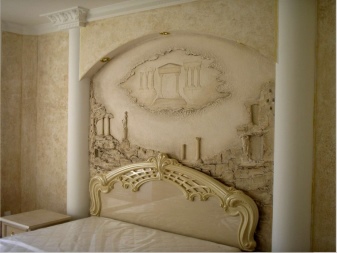
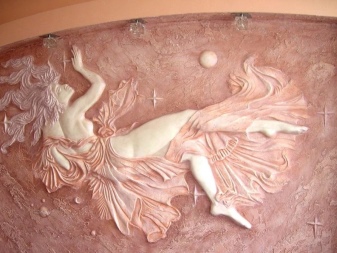
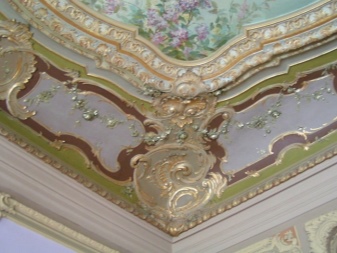
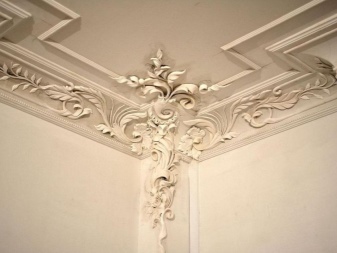
Material selection
Stucco molding was used in decorating residential interiors centuries ago, and for many centuries it has not lost its relevance. Nowadays, it is widely in demand when decorating premises in such stylistic directions., like classics, baroque and empire, some types of stucco are used even in minimalism and hi-tech.
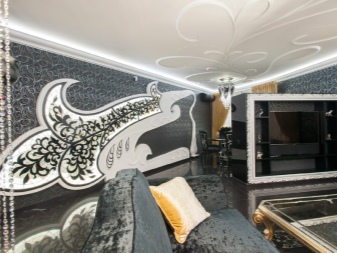

In any hardware store, ready-made elements are sold to create spectacular reliefs, but in order to make the decor truly unique, some owners of premises choose individual design.
If you are determined to cook the stucco with your own hands, then gypsum will be the optimal material for this. This choice is explained by the significant advantages of the composition, they include:
- natural origin of the working material;
- environmental safety;
- hypoallergenic;
- resistance to pathogenic microflora;
- hydrostability;
- fire resistance.

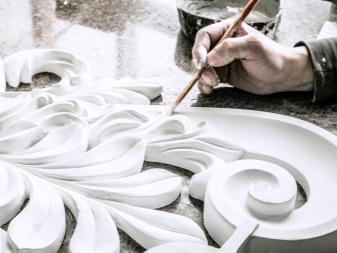
It is not at all difficult to work with gypsum, however, all manipulations will have to be performed extremely quickly., since this material solidifies within 6-7 minutes, and after another 5 minutes it completely loses its plasticity. Of the disadvantages of gypsum, a very impressive mass, fragility of the workpieces can be distinguished. From plaster, they create spectacular reliefs on the ceiling and walls, decorate the portals of fireplaces and columns.
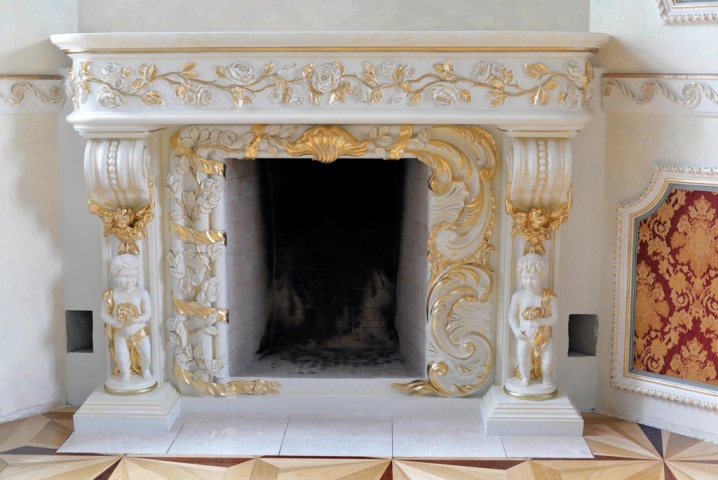
We pay special attention to the fact that before starting work, you need to prepare a workplace. Of course, ideally, use a separate room, but not everyone has this opportunity. Therefore, it makes sense to take certain precautions, namely to hang the walls, furniture, as well as the floor and other interior items with plastic wrap - it will be very difficult to remove the composition after it hardens.

At the initial stage of work, you will need a large piece of paper of a suitable size, as well as a simple pencil, a little later, the following set of tools and materials will be used:
- gypsum mixture;
- putty;
- spatulas of different sizes;
- ruler;
- sharp knife;
- a glass or any other container;
- sculpting tools - spatulas, stacks, knives, as well as brushes;
- clay or plasticine;
- cement or alabaster;
- PVA glue;
- liquid silicone, as well as a special gun for working with it;
- release agent;
- gauze;
- fine sandpaper.
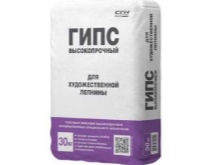
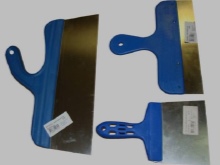

Tip: if you are going to do stucco molding for the first time, start with the simplest in shape and small in size, so you can get a feel for the material and master the basics of working with it.
Step by step manufacturing
Sketching
A sketch for your future modeling simulation should be made according to real measurements in a 1 to 1 ratio. To work faster, you can make a drawing in advance, where all the proportions of the structure will be expressed.
You can make a sketch according to your own ideas, or you can use drawings taken from the Internet. Initially, be sure to plan the binding to the terrain, that is, mentally place all the details of the stucco molding on the ceilings and walls - for this you will need a ruler, as well as information about pipes, wiring and other communications carried out.
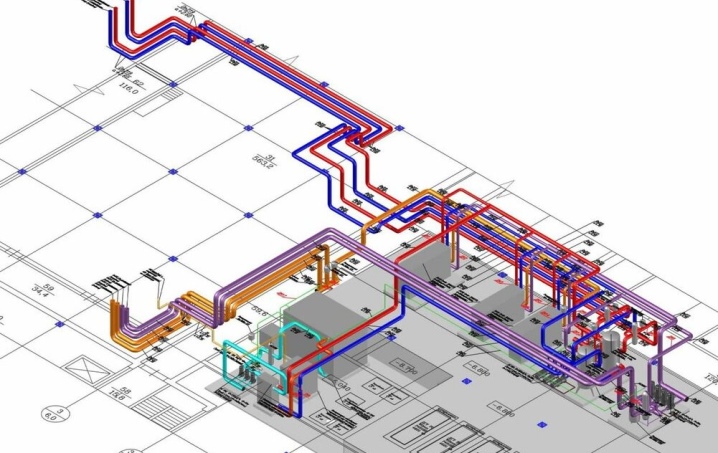
If you do not pay enough attention to this stage of work, then subsequently big problems cannot be avoided - the element may turn out to be disproportionate or block access to the wiring.
The design and form of the decor should fit as aesthetically as possible into the overall stylistic solution of the room.
The finished layout can be drawn in natural size on a piece of paper of a suitable size. In its absence, you can use special graphic programs that allow you to print a layout on a printer on several sheets of paper - they are glued together so as to increase the format to A1 or A0 size.
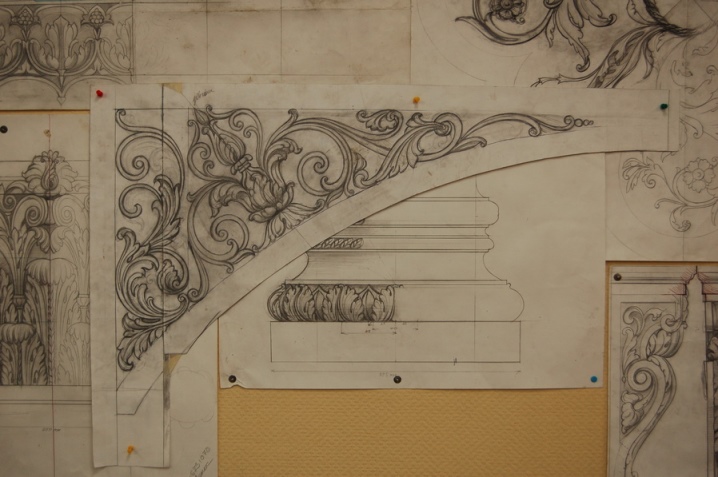
Preparation
After that, the shape of the future stucco molding should be made from clay or plasticine, always in full size - later, casting will be performed on it. Gypsum or plasticine must be treated with a lubricant, after which silicone or silicone oil is applied to it with a brush. At this stage of the work, it is necessary to be as careful as possible and not to allow the appearance of bubbles - they can adversely affect the appearance of the architectural form. After the first silicone layer is applied, it is strengthened with gauze, and after a couple of hours, the manipulations are repeated. The finished form must have at least a couple of layers of silicone and fabric so that its thickness corresponds to 3-4 mm, for large forms this parameter must be increased to 4-5 mm.
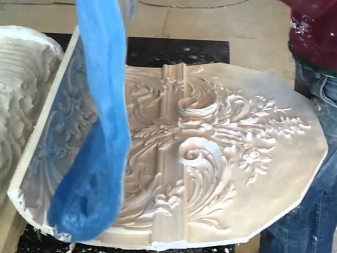
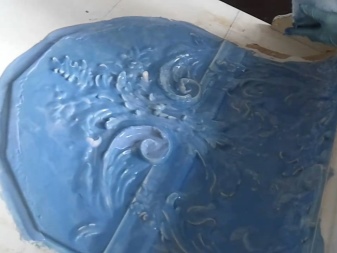
Upon completion of solidification and drying, the mold is separated from the frame and placed in a box.
If you are going to create a dimensional shape, then you will additionally need to fix the frame on the support with alabaster or cement - they are able to withstand the impressive weight of your future gypsum workpiece.
So that the stucco molding can be freely removed from the mold, and subsequently has no visual defects, you can process the mold with any colorless varnish or silicone oil. Only after that you can proceed directly to pouring the prepared gypsum solution.
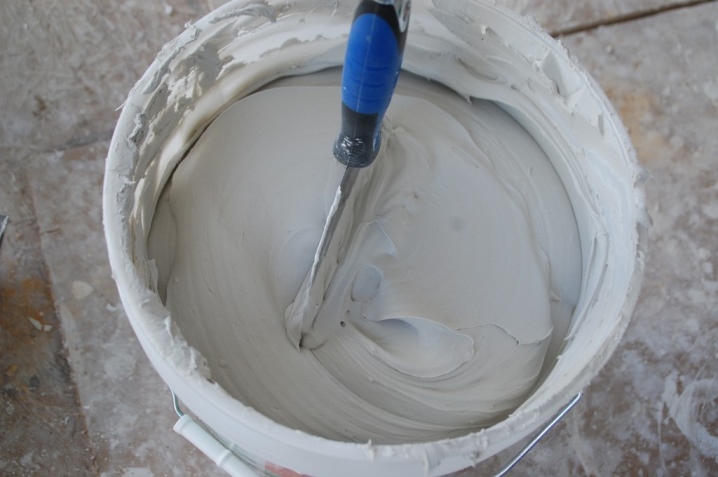
Fill
Filling is considered one of the most critical stages of the technology, therefore, before starting it, you need to make sure that you have all the main consumables and tools at hand. To draw up a solution, dry gypsum is mixed with water in a ratio of 10 to 7, while water is poured in parts, but very quickly, then thoroughly mixed using a construction mixer.
PVA glue, diluted in half with water, is added to the resulting mixture - it will take about 1 part. This additive imparts plasticity to the solution and further minimizes the risk of cracking. The finished mixture before pouring the mold should acquire the consistency of liquid sour cream.

After the gypsum composition is poured into the mold, it is necessary to level its surface with a spatula - this will ensure the most tight fit of the stucco molding to horizontal or vertical surfaces.
This is especially true if you intend to fix the stucco molding on the ceiling surface, since such an installation requires the most durable connection.

Drying
Gypsum sets for about 15-20 minutes, depending on the air temperature and the level of humidity in the room. Then it is carefully taken out and left to dry completely for a couple of days.
To achieve a good result, you must adhere to the following conditions:
- do not make drafts;
- perform work in a dry place;
- maintain the temperature at 18 degrees or more.
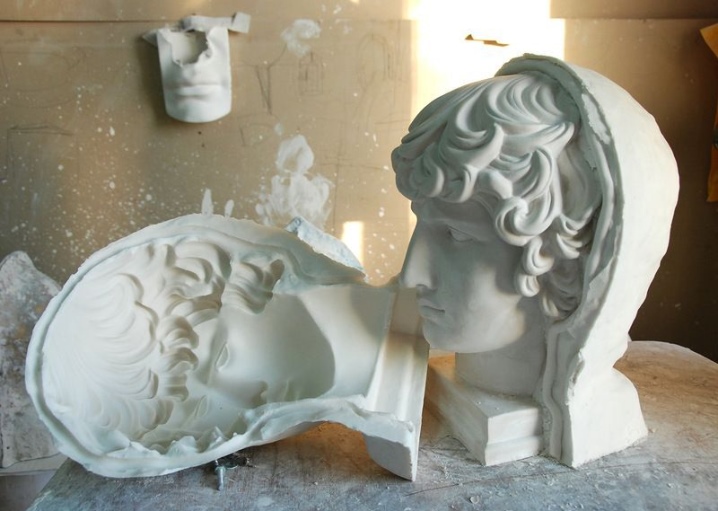
If you perform operations in a room with a high level of humidity, then this will lead to the appearance of cracks on the gypsum during its installation. With great care, gypsum is used in damp rooms with poor ventilation - this is fraught with the appearance of mold, as well as a change in color to yellow.
If it is impossible to find a room with other technical conditions, you should use gypsum mixtures with special fungicidal and waterproof additives that will protect the stucco molding from moisture.
The main advantage of gypsum is its plasticity. However, the same properties are dictated by certain rules for making stucco moldings.

Until the form has completely hardened, it is enough to slightly adjust it to the desired dimensions. Therefore, experienced craftsmen recommend gluing plaster stucco decoration 3 days after its manufacture. If you start work earlier, the dry product will not achieve adequate strength. At the same time, when carrying out manipulations 5-7 days after the preparation of the workpiece, the solution will harden so much that you may have difficulties with its cutting and installation.

The finishing touch when performing stucco molding will be surface correction using fine sandpaper - it will allow you to get rid of the typical roughness, as well as easily smooth out minor image defects.
We pay special attention to the fact that any gypsum products have an impressive weight, therefore, before applying, the reverse side must be treated with a primer - this will ensure maximum adhesion to the surface. It is advisable to fix a paint net on large elements, and then also treat with primers.
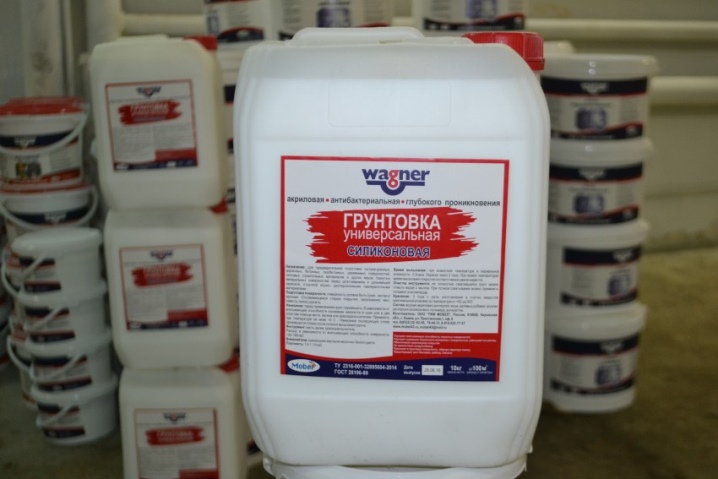
Installation rules
If you are going to mount ready-made stucco molding made of polystyrene or polyurethane, then special adhesives can be used to fix it. The plaster form, due to the severity of the structure, requires a more solid connection with horizontal and vertical surfaces. Such modules are easily fixed on concrete, plasterboard and plastered surfaces, but problems with a wooden coating and when fixing stucco molding to wallpaper can arise.
Drywall without fail requires a preamplifier, otherwise it will not withstand the mass of the architectural form.
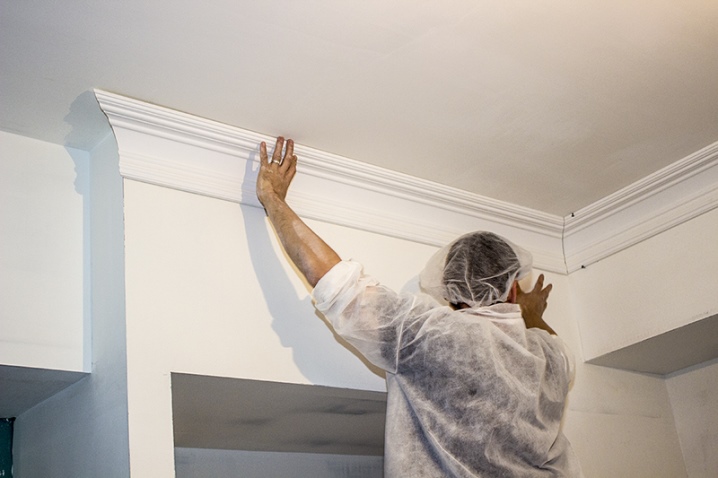
To improve adhesion and prevent the absorption of adhesives, the surface to be decorated is treated with a primer. For the same purpose, the figures themselves must be moistened with water a few minutes before use and make small notches. Then the parts are greased with glue and fixed, the remnants of the glue are removed with a wet sponge.
This method is suitable exclusively for fixing small elements; for large ones, you need to use more serious fasteners - self-tapping screws or screws. The drilling process should be done very carefully, the caps are filled with plaster after work.

The final detail is the application of the primer or paint finish. This solution will give the stucco molding a neat look that will harmoniously fit into the style of the room and its color scheme.
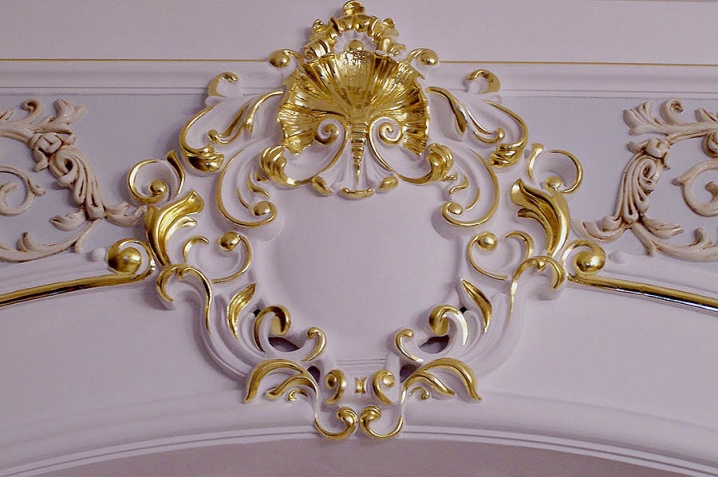
Beautiful examples
A homemade sculpting imitation has every chance of becoming the center of a home or office space. It emphasizes the style and visually transforms the space, giving it an aesthetic and harmonious look. It is very important to choose the right quality products in accordance with the general concept of the project, and then carry out the correct installation.
- Stucco molding can be attached to walls or decorate the ceiling.
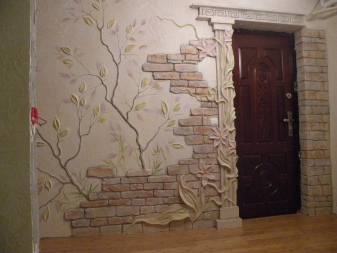

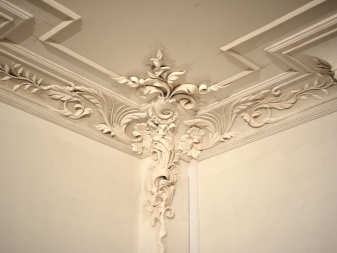
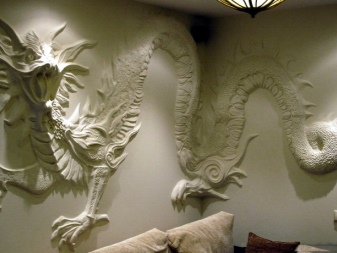
- If you have some experience with plaster and artistic ability, you can make a painting from flowers and other architectural forms.

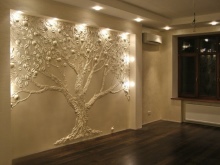
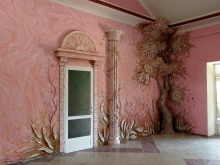
- Stucco molding looks good in a frame.
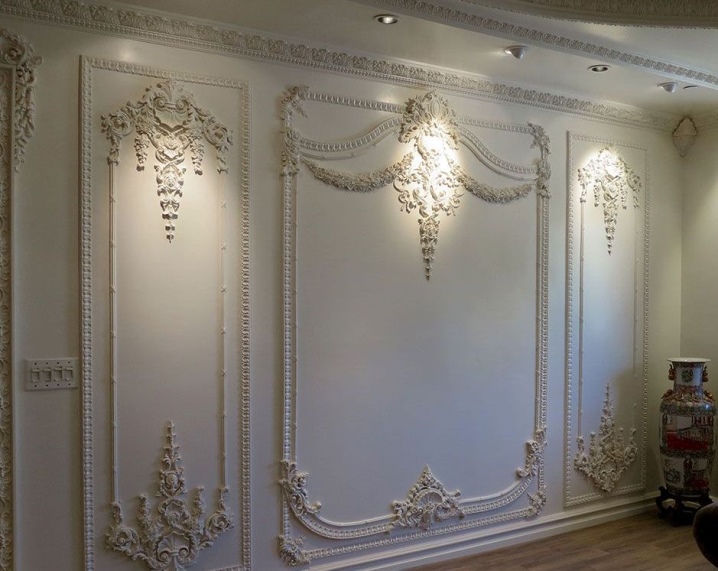
- An unusual solution is the placement of stucco moldings on the facade.
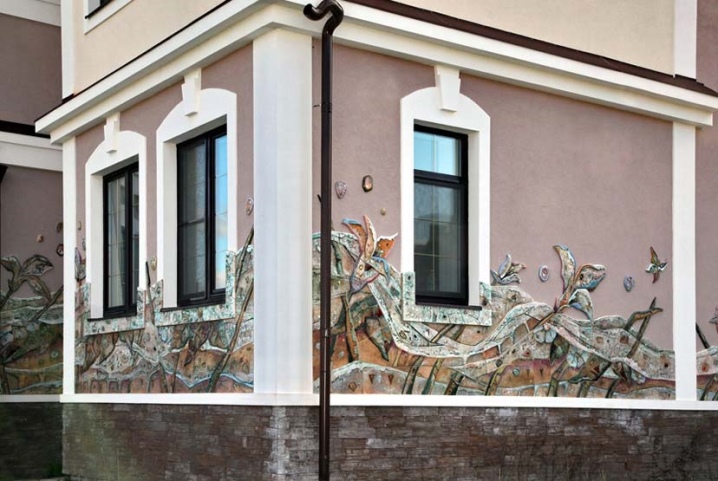
How to make a lipnin with your own hands, see below.













The comment was sent successfully.